
Paolo Cagliari Veronese Painting Reproductions 1 of 2
c.1528-1588
Italian Mannerist Painter
Paolo Caliari’s reputation rests on an intelligence of colour so assured that it appears inevitable. Born in Verona in 1528 to Gabriele, a stonecutter, and Caterina, the adolescent painter absorbed the textures of marble and lime as intuitively as others learned grammar. His apprenticeship under Antonio Badile and later Giovanni Francesco Caroto refined the instinct, yet it was Verona’s crisp light - filtered through ochre walls and river mist - that first schooled his eye in modulation rather than bravura.
The young painter signed early canvases “Paolo Caliari” to acknowledge the patrician ancestry of his mother, though contemporaries soon knew him as “Veronese,” a sobriquet that balanced civic pride with artistic ambition. By his late teens he was entrusted with altarpieces that ventured beyond workshop pattern books. The Conversion of Mary Magdalene already shows figures described by colour before contour, their musculature inferred through graded highlights instead of drawn line, an approach that would become the painter’s hallmark.
In 1553 Veronese relocated to Venice after winning the commission to fresco the newly rebuilt Council of Ten chambers in the Doge’s Palace. There he encountered Titian’s saturated harmonies and Tintoretto’s vaulting perspectives. Where Tintoretto dramatised space, Veronese stabilised it, suspending actors within lucid architectures that seem at once classical and freshly theatrical. His History of Esther at San Sebastiano marries Correggio’s fluent foreshortenings to Michelangelo’s heroic scale, yet submits both to a chromatic discipline that privileges tonality over outline.
The encounter with Andrea Palladio proved decisive. At the Villa Barbaro, completed late in the 1550s, painter and architect fused fictive and real space: columns dissolve into painted vistas, portraits converse with mythic deities, ceilings open to cobalt skies. Rather than dazzle, the ensemble persuades by equilibrium - aesthetic gravitas offsetting pastoral levity. Two years later The Wedding at Cana translated that dialogue between architecture and spectacle onto canvas. The vast refectory panel rehearses the Eucharistic theme via an ostensibly secular banquet, its pageantry undercut by an almost analytical ordering of hue that guides the eye from Venetian brocades to distant azure.
Veronese’s refectory cycles, from the Feast in the House of Simon to The Family of Darius before Alexander, orchestrate movement along the horizontal axis of dining tables, resisting the temptation to plunge depths theatrically. The result is narrative as procession: gesture, costume, and setting cohere in a rhythm closer to civic ceremony than spiritual drama. Critics accustomed to probing psychology have sometimes read detachment in this poise, yet the restraint is intentional, the painter insisting that revelation may occur in daylight rather than chiaroscuro.
His composure was tested in 1573, when The Feast in the House of Levi, originally conceived as a Last Supper, brought him before the Holy Office. Dwarfs, dogs, and German guardsmen - innocuous to a painter who claimed the liberties of poets - offended Tridentine decorum. Veronese offered to amend nothing; instead he retitled the canvas. The episode underscores both the painter’s confidence and the Republic’s pragmatic tolerance, a climate in which pictorial splendour could skirt doctrinal edges without rupture.
By the 1580s Veronese presided over a substantial workshop involving his younger brother Benedetto and later his sons Carlo, Gabriele, and Benedetto II. Yet even collaborative pieces such as Perseus and Andromeda retain the unmistakable signature of calibrated brilliance: pinks tempered by stone greys, silks offset by copper shadow, a chromatic architecture that anticipates the eighteenth‑century bravura of Tiepolo. When he died in Venice on 19 April 1588, aged sixty, the funeral cortege paused beneath his own ceilings at San Sebastiano - a rare homage granted by the Senate in recognition of civic service through art.
Posterity has oscillated in its judgement. Where Vasari admired facility, later critics faulted an absence of tragic gravity. Yet painters from Rubens to Renoir found in Veronese’s palette a logic of light that emancipated colour from purely descriptive duty. Modern viewers, no less indebted, may discover in his measured theatricality a visual ethics: spectacle constrained by order, splendour moderated by lucidity, opulence rendered articulate rather than merely grand.
If Titian offers depth and Tintoretto momentum, Veronese confers balance - a reconciliation of narrative glamour with chromatic reason. His achievement lies not in isolated gestures of brilliance but in a consistent conviction that painting, like architecture, can shape civic space and private devotion alike through the dignity of measured light.
The young painter signed early canvases “Paolo Caliari” to acknowledge the patrician ancestry of his mother, though contemporaries soon knew him as “Veronese,” a sobriquet that balanced civic pride with artistic ambition. By his late teens he was entrusted with altarpieces that ventured beyond workshop pattern books. The Conversion of Mary Magdalene already shows figures described by colour before contour, their musculature inferred through graded highlights instead of drawn line, an approach that would become the painter’s hallmark.
In 1553 Veronese relocated to Venice after winning the commission to fresco the newly rebuilt Council of Ten chambers in the Doge’s Palace. There he encountered Titian’s saturated harmonies and Tintoretto’s vaulting perspectives. Where Tintoretto dramatised space, Veronese stabilised it, suspending actors within lucid architectures that seem at once classical and freshly theatrical. His History of Esther at San Sebastiano marries Correggio’s fluent foreshortenings to Michelangelo’s heroic scale, yet submits both to a chromatic discipline that privileges tonality over outline.
The encounter with Andrea Palladio proved decisive. At the Villa Barbaro, completed late in the 1550s, painter and architect fused fictive and real space: columns dissolve into painted vistas, portraits converse with mythic deities, ceilings open to cobalt skies. Rather than dazzle, the ensemble persuades by equilibrium - aesthetic gravitas offsetting pastoral levity. Two years later The Wedding at Cana translated that dialogue between architecture and spectacle onto canvas. The vast refectory panel rehearses the Eucharistic theme via an ostensibly secular banquet, its pageantry undercut by an almost analytical ordering of hue that guides the eye from Venetian brocades to distant azure.
Veronese’s refectory cycles, from the Feast in the House of Simon to The Family of Darius before Alexander, orchestrate movement along the horizontal axis of dining tables, resisting the temptation to plunge depths theatrically. The result is narrative as procession: gesture, costume, and setting cohere in a rhythm closer to civic ceremony than spiritual drama. Critics accustomed to probing psychology have sometimes read detachment in this poise, yet the restraint is intentional, the painter insisting that revelation may occur in daylight rather than chiaroscuro.
His composure was tested in 1573, when The Feast in the House of Levi, originally conceived as a Last Supper, brought him before the Holy Office. Dwarfs, dogs, and German guardsmen - innocuous to a painter who claimed the liberties of poets - offended Tridentine decorum. Veronese offered to amend nothing; instead he retitled the canvas. The episode underscores both the painter’s confidence and the Republic’s pragmatic tolerance, a climate in which pictorial splendour could skirt doctrinal edges without rupture.
By the 1580s Veronese presided over a substantial workshop involving his younger brother Benedetto and later his sons Carlo, Gabriele, and Benedetto II. Yet even collaborative pieces such as Perseus and Andromeda retain the unmistakable signature of calibrated brilliance: pinks tempered by stone greys, silks offset by copper shadow, a chromatic architecture that anticipates the eighteenth‑century bravura of Tiepolo. When he died in Venice on 19 April 1588, aged sixty, the funeral cortege paused beneath his own ceilings at San Sebastiano - a rare homage granted by the Senate in recognition of civic service through art.
Posterity has oscillated in its judgement. Where Vasari admired facility, later critics faulted an absence of tragic gravity. Yet painters from Rubens to Renoir found in Veronese’s palette a logic of light that emancipated colour from purely descriptive duty. Modern viewers, no less indebted, may discover in his measured theatricality a visual ethics: spectacle constrained by order, splendour moderated by lucidity, opulence rendered articulate rather than merely grand.
If Titian offers depth and Tintoretto momentum, Veronese confers balance - a reconciliation of narrative glamour with chromatic reason. His achievement lies not in isolated gestures of brilliance but in a consistent conviction that painting, like architecture, can shape civic space and private devotion alike through the dignity of measured light.
28 Veronese Paintings

Allegory of Wisdom and Strength c.1580
Oil Painting
$4865
$4865
Canvas Print
$71.99
$71.99
SKU: VPC-3192
Paolo Cagliari Veronese
Original Size: 214.6 x 167 cm
Frick Collection, New York, USA
Paolo Cagliari Veronese
Original Size: 214.6 x 167 cm
Frick Collection, New York, USA
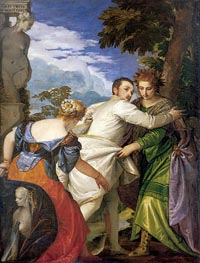
Allegory of Virtue and Vice (Choice of Hercules) c.1580
Oil Painting
$4655
$4655
Canvas Print
$71.81
$71.81
SKU: VPC-3193
Paolo Cagliari Veronese
Original Size: 219 x 169.5 cm
Frick Collection, New York, USA
Paolo Cagliari Veronese
Original Size: 219 x 169.5 cm
Frick Collection, New York, USA
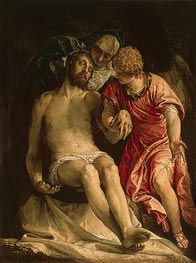
The Lamentation (Pieta) c.1576/82
Oil Painting
$4753
$4753
Canvas Print
$69.94
$69.94
SKU: VPC-3194
Paolo Cagliari Veronese
Original Size: 147 x 111.5 cm
The State Hermitage Museum, St. Petersburg, Russia
Paolo Cagliari Veronese
Original Size: 147 x 111.5 cm
The State Hermitage Museum, St. Petersburg, Russia
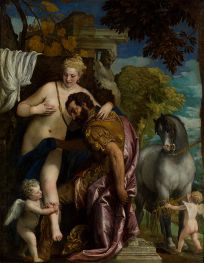
Mars and Venus United by Love c.1570
Oil Painting
$4942
$4942
Canvas Print
$73.19
$73.19
SKU: VPC-3953
Paolo Cagliari Veronese
Original Size: 205.7 x 161 cm
Metropolitan Museum of Art, New York, USA
Paolo Cagliari Veronese
Original Size: 205.7 x 161 cm
Metropolitan Museum of Art, New York, USA
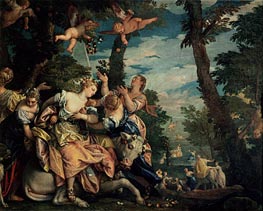
The Rape of Europa c.1576/80
Oil Painting
$8963
$8963
Canvas Print
$74.55
$74.55
SKU: VPC-4841
Paolo Cagliari Veronese
Original Size: 240 x 303 cm
Palazzo Ducale, Venice, Italy
Paolo Cagliari Veronese
Original Size: 240 x 303 cm
Palazzo Ducale, Venice, Italy
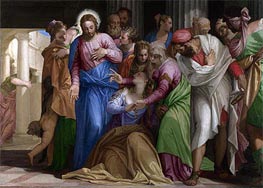
Christ addressing a Kneeling Woman (The ... a.1546
Oil Painting
$9364
$9364
Canvas Print
$67.19
$67.19
SKU: VPC-8487
Paolo Cagliari Veronese
Original Size: 117.5 x 163.5 cm
National Gallery, London, UK
Paolo Cagliari Veronese
Original Size: 117.5 x 163.5 cm
National Gallery, London, UK

Raising of the Widow's Son of Nain c.1565/70
Oil Painting
$6118
$6118
Canvas Print
$68.91
$68.91
SKU: VPC-10576
Paolo Cagliari Veronese
Original Size: 102 x 136 cm
Kunsthistorisches Museum, Vienna, Austria
Paolo Cagliari Veronese
Original Size: 102 x 136 cm
Kunsthistorisches Museum, Vienna, Austria
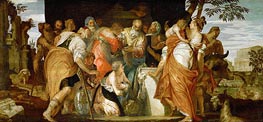
Ointment of David c.1555/60
Oil Painting
$15634
$15634
Canvas Print
$62.05
$62.05
SKU: VPC-13062
Paolo Cagliari Veronese
Original Size: 173 x 364 cm
Kunsthistorisches Museum, Vienna, Austria
Paolo Cagliari Veronese
Original Size: 173 x 364 cm
Kunsthistorisches Museum, Vienna, Austria
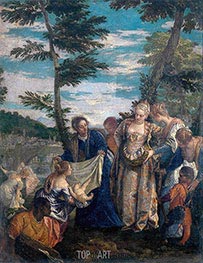
Moses Saved from the Waters c.1580
Oil Painting
$4347
$4347
Canvas Print
$72.49
$72.49
SKU: VPC-16740
Paolo Cagliari Veronese
Original Size: 57 x 43 cm
Prado Museum, Madrid, Spain
Paolo Cagliari Veronese
Original Size: 57 x 43 cm
Prado Museum, Madrid, Spain
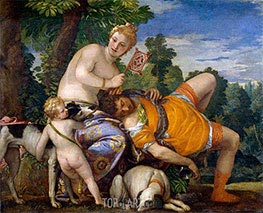
Venus and Adonis c.1580
Oil Painting
$4989
$4989
Canvas Print
$76.26
$76.26
SKU: VPC-16741
Paolo Cagliari Veronese
Original Size: 162 x 191 cm
Prado Museum, Madrid, Spain
Paolo Cagliari Veronese
Original Size: 162 x 191 cm
Prado Museum, Madrid, Spain
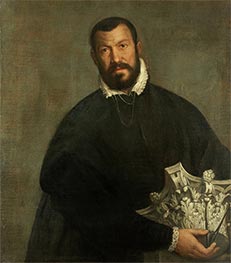
Portrait of the Architect Vincenzo Scamozzi c.1585
Oil Painting
$1473
$1473
Canvas Print
$82.42
$82.42
SKU: VPC-18314
Paolo Cagliari Veronese
Original Size: 92 x 80 cm
Paolo Cagliari Veronese
Original Size: 92 x 80 cm
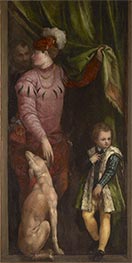
A Boy and a Page c.1570/79
Oil Painting
$2013
$2013
Canvas Print
$62.05
$62.05
SKU: VPC-19013
Paolo Cagliari Veronese
Original Size: 205 x 104 cm
Fuji Art Museum, Tokyo, Japan
Paolo Cagliari Veronese
Original Size: 205 x 104 cm
Fuji Art Museum, Tokyo, Japan
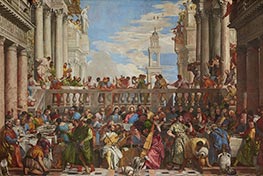
The Wedding at Cana c.1562/63
Canvas Print
$62.92
$62.92
SKU: VPC-19162
Paolo Cagliari Veronese
Original Size: 677 x 994 cm
Louvre Museum, Paris, France
Paolo Cagliari Veronese
Original Size: 677 x 994 cm
Louvre Museum, Paris, France
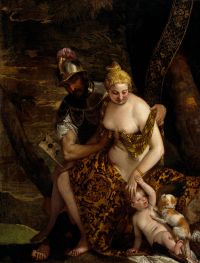
Mars, Venus and Cupid c.1580
Oil Painting
$3161
$3161
Canvas Print
$71.65
$71.65
SKU: VPC-19517
Paolo Cagliari Veronese
Original Size: 165.2 x 126.5 cm
National Galleries of Scotland, Edinburgh, UK
Paolo Cagliari Veronese
Original Size: 165.2 x 126.5 cm
National Galleries of Scotland, Edinburgh, UK
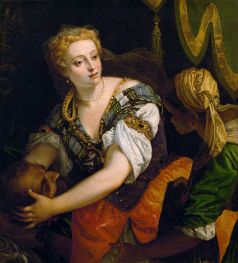
Judith with the Head of Holofernes c.1575/80
Oil Painting
$2614
$2614
Canvas Print
$85.15
$85.15
SKU: VPC-19518
Paolo Cagliari Veronese
Original Size: 111 x 100.5 cm
Kunsthistorisches Museum, Vienna, Austria
Paolo Cagliari Veronese
Original Size: 111 x 100.5 cm
Kunsthistorisches Museum, Vienna, Austria
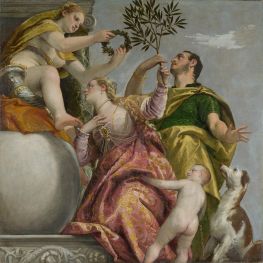
Happy Union c.1575
Oil Painting
$3129
$3129
Canvas Print
$94.04
$94.04
SKU: VPC-19519
Paolo Cagliari Veronese
Original Size: 187.4 x 186.7 cm
National Gallery, London, UK
Paolo Cagliari Veronese
Original Size: 187.4 x 186.7 cm
National Gallery, London, UK
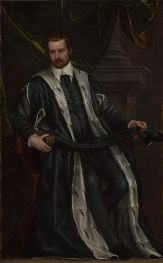
Portrait of a Gentleman of the Soranzo Family c.1585
Oil Painting
$2988
$2988
Canvas Print
$62.05
$62.05
SKU: VPC-19520
Paolo Cagliari Veronese
Original Size: 181.5 x 111 cm
National Gallery, London, UK
Paolo Cagliari Veronese
Original Size: 181.5 x 111 cm
National Gallery, London, UK
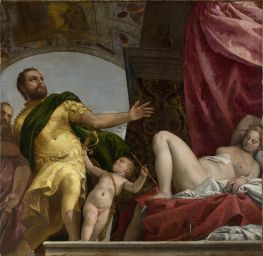
Respect c.1575
Oil Painting
$2865
$2865
Canvas Print
$91.48
$91.48
SKU: VPC-19521
Paolo Cagliari Veronese
Original Size: 186 x 194.3 cm
National Gallery, London, UK
Paolo Cagliari Veronese
Original Size: 186 x 194.3 cm
National Gallery, London, UK
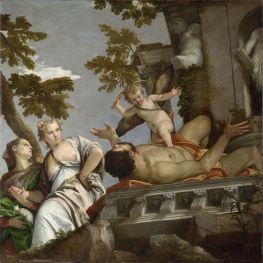
Scorn c.1575
Oil Painting
$4052
$4052
Canvas Print
$94.04
$94.04
SKU: VPC-19522
Paolo Cagliari Veronese
Original Size: 186.6 x 188.5 cm
National Gallery, London, UK
Paolo Cagliari Veronese
Original Size: 186.6 x 188.5 cm
National Gallery, London, UK
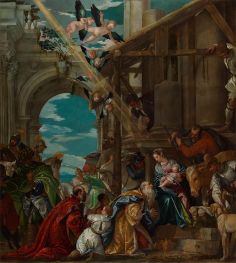
The Adoration of the Kings 1573
Oil Painting
$9901
$9901
Canvas Print
$84.63
$84.63
SKU: VPC-19523
Paolo Cagliari Veronese
Original Size: 355.6 x 320 cm
National Gallery, London, UK
Paolo Cagliari Veronese
Original Size: 355.6 x 320 cm
National Gallery, London, UK
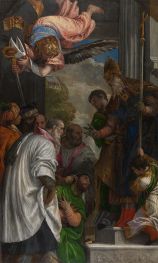
The Consecration of Saint Nicholas 1562
Oil Painting
$4535
$4535
Canvas Print
$62.05
$62.05
SKU: VPC-19524
Paolo Cagliari Veronese
Original Size: 286.5 x 175.3 cm
National Gallery, London, UK
Paolo Cagliari Veronese
Original Size: 286.5 x 175.3 cm
National Gallery, London, UK
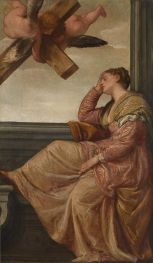
The Dream of Saint Helena c.1570
Oil Painting
$2124
$2124
Canvas Print
$62.05
$62.05
SKU: VPC-19525
Paolo Cagliari Veronese
Original Size: 197.5 x 115.6 cm
National Gallery, London, UK
Paolo Cagliari Veronese
Original Size: 197.5 x 115.6 cm
National Gallery, London, UK
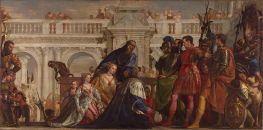
The Family of Darius before Alexander c.1565/67
Oil Painting
$9393
$9393
Canvas Print
$62.05
$62.05
SKU: VPC-19526
Paolo Cagliari Veronese
Original Size: 236.2 x 475 cm
National Gallery, London, UK
Paolo Cagliari Veronese
Original Size: 236.2 x 475 cm
National Gallery, London, UK
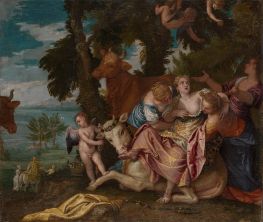
The Rape of Europa c.1570
Oil Painting
$6231
$6231
Canvas Print
$79.33
$79.33
SKU: VPC-19527
Paolo Cagliari Veronese
Original Size: 59.5 x 70 cm
National Gallery, London, UK
Paolo Cagliari Veronese
Original Size: 59.5 x 70 cm
National Gallery, London, UK